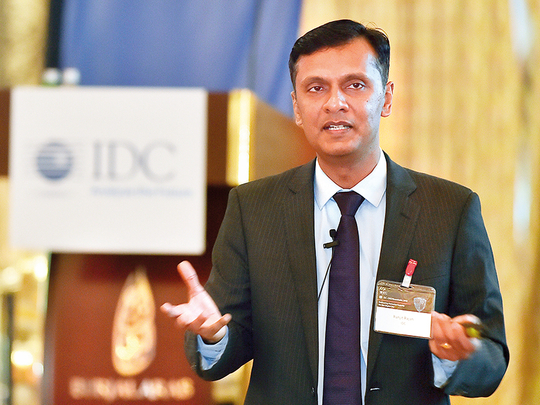
Dubai: The commercial launch of 5G services in the Gulf will be driven not just by competitive reasons but also by telcos’ ongoing digital transformation initiatives. Another factor would be to restrict revenue erosion from traditional services, analysts said.
Ranjit Rajan, associate vice-president at International Data Corporation (IDC), said regional operators are determined to position themselves as early adopters of the cutting-edge mobile wireless networks alongside the likes of the US, China, Japan, Korea, and Nordic countries. These networks promise significant speed gains, latency, and densification advantages, which will generate a range of transformative applications across every industry — from autonomous vehicles to immersive 4K video and virtual reality, he added.
Turgut Erkul, head of networks evolution and transport solutions at Ericsson, said telcos are not growing as they want to in terms of profitability. “We have passed through a phase where voice has become second to data usage,” Erkul said. “Many countries are making more money from data than voice.”
Yearly revenue growth for telcos expected until 2026.
“Operators are now at a turning point where they will make more money from machine-to-machine communications, which means machines will be making more money than data.” The opportunities for operators are to get into the digitisation of industries. And even though video consumption is growing, it is not making money for operators, Erkul said, adding that global telcos’ revenue is expected to grow only at 1.5 per cent on an annual basis until 2026.
“Operators need to grow faster and 5G gives them hope,” he said. “If they can find the sweet spots where they can add value to industries, then operators have the potential to address a revenue opportunity of $204 billion [Dh749.1 billion] to $619 billion by 2026, in addition to the forecasted telecom service revenues of $1.7 trillion in 2026,” he said. “What we need to consider is business models and how telecom operators are going to make money in this kind of set up. We are in a position where operators do not know how to charge and industries do not what to ask for.”
If operators become the connectivity provider and enabler, he said they will make more than $200 billion. And if they manage to create services that are useful for industries and end-users, they could make an extra $600 billion plus by 2026.
In the short- to mid-term, Rajan said operators face a few challenges in terms of availability of sufficient spectrum space, conceptualising new usage cases and business models, migration for IoT technologies, and, most importantly, a network rollout plan to maximise returns on their earlier 4G investments.
“4G will continue to remain a key technology for some time to come,” Rajan said. “In the early stages, 5G will act as a pressure value to better distribute network capacity across networks. Then, as developers and innovators come in, new use cases will emerge.”
He said the success of operators will be dependent on their ability to collaborate, not just with network equipment providers but also with developers, content providers and enterprise customers to enable use cases while retaining some degree of ownership of new applications.
While 4G offers a latency of 15-20 milliseconds, 5G offers one of 1 millisecond and benefit verticals such as autonomous vehicles, healthcare, virtual reality and augmented reality due to the high speed and low latency, which is not possible on 4G networks. In 5G, data speeds will be 10 to 100 times faster and provide up to 10Gbps.












